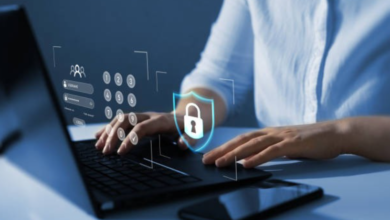Deepfake Detection: Safeguarding Digital Identities with Advanced Liveness Detection

In today’s rapidly evolving digital world, visual content is one of the most powerful tools for communication, marketing, and personal identity. However, with the rise of AI-generated media, known as deepfakes, the line between real and fake has blurred significantly. Deepfake technology, which uses deep learning algorithms to manipulate or generate human likenesses, poses a serious threat to privacy, security, and trust in digital spaces. To combat this growing challenge, deepfake detection technologies combined with liveness detection solutions are becoming essential for businesses and individuals alike.
What Are Deepfakes and Why Are They Dangerous?
Deepfakes are hyper-realistic videos, images, or audio clips created using artificial intelligence. They can imitate a person’s face, voice, or gestures, often so convincingly that the naked eye cannot distinguish them from authentic content. While this technology can have legitimate uses in film, entertainment, and education, it has also opened the door for malicious activities.
Cybercriminals and fraudsters are increasingly using deepfakes for identity theft, misinformation, financial scams, and social engineering attacks. For instance, a fake video of a CEO instructing an employee to transfer money can result in massive financial loss. Similarly, deepfake-based misinformation campaigns can manipulate public opinion, especially during elections or global crises. This makes deepfake detection not just a technological necessity but a societal one.
The Role of Deepfake Detection Technology
Deepfake detection refers to the process of identifying AI-generated or manipulated visual and audio content. It uses machine learning models trained to spot subtle inconsistencies that differentiate fake content from real footage.
Detection algorithms analyse multiple data points such as pixel-level anomalies, unnatural blinking patterns, lighting inconsistencies, and facial distortions. These AI models are designed to improve continuously, learning from newly discovered deepfake samples to stay ahead of evolving threats.
Tech companies and security platforms are investing heavily in this area. YouTube, Meta, and Microsoft, for example, have launched projects aimed at detecting and labelling deepfake content to protect online communities. For businesses, integrating deepfake detection systems into their digital identity verification workflows is becoming increasingly critical to ensure authenticity.
Liveness Detection: The First Line of Defence
While deepfake detection focuses on identifying manipulated media, liveness detection ensures that the person interacting with a system is physically present and not using a fake image, video, or mask. It acts as the first layer of protection in identity verification processes such as facial recognition, online onboarding, and digital banking.
Liveness detection can be divided into two types: active and passive.
- Active liveness detection requires user interaction, such as blinking, smiling, or moving the head to prove they are real.
- Passive liveness detection, on the other hand, analyses a single image or video frame without requiring user action. It detects subtle signs of life using AI models trained on texture, reflection, and depth patterns.
When combined with deepfake detection, liveness technology creates a robust defence system that blocks spoofing attacks, ensuring that only real users gain access.
How Deepfake Detection and Liveness Detection Work Together
The combination of deepfake detection and liveness detection creates a layered approach to digital identity protection. Liveness detection ensures that a live human is present during authentication, while deepfake detection analyses the authenticity of the captured image or video in real time.
For instance, during an online verification process, liveness detection confirms the presence of a real user, while deepfake detection algorithms verify that the video feed is not AI-generated. Together, they prevent spoofing, impersonation, and fraudulent onboarding attempts.
This integration is particularly vital in industries like finance, healthcare, and government services, where identity accuracy is paramount. In these sectors, even a single deepfake attack could result in significant reputational and financial damage.
The Growing Need for Deepfake Detection in Business
As more companies transition to digital-first operations, identity verification has become a cornerstone of customer trust. Businesses that fail to implement deepfake detection risk falling victim to synthetic identity fraud, fake KYC (Know Your Customer) verifications, or manipulated biometric data.
Modern consumers also expect privacy and authenticity from digital interactions. Deploying liveness detection and deepfake analysis not only protects users but also builds confidence in the brand. This is particularly relevant for fintech, e-commerce, and online recruitment platforms where identity verification happens remotely.
Furthermore, governments and regulatory bodies are beginning to acknowledge the importance of combating deepfakes. Regulations are being drafted worldwide to mandate stronger identity verification standards that incorporate deepfake detection and liveness detection technologies.
AI’s Double-Edged Sword
Ironically, the same AI technology that enables deepfakes is also being used to fight them. Researchers are leveraging deep learning to train models that can detect fakes more accurately and quickly. These models can spot even minute irregularities invisible to the human eye.
However, this is an ongoing race. As detection algorithms improve, deepfake creation tools also evolve, producing even more convincing results. This constant cat-and-mouse dynamic highlights the need for continuous innovation in deepfake detection research.
The Future of Digital Identity Protection
The future of digital identity will depend on the strength of deepfake detection and liveness detection systems. As deepfakes become more sophisticated, detection tools will need to operate in real time and at scale.
We can expect to see the integration of blockchain, multi-modal biometrics, and federated AI systems in identity verification platforms. These advancements will make it harder for malicious actors to manipulate identities or bypass authentication systems.
Ultimately, the goal is not just to detect deepfakes but to build a trustworthy digital ecosystem where every user interaction is verifiable and secure.
Conclusion
Deepfakes have transformed the digital landscape, bringing both innovation and risk. As their use continues to expand, deepfake detection and liveness detection technologies have become indispensable tools for maintaining authenticity and security.
By combining these technologies, organisations can defend against identity fraud, misinformation, and AI-driven deception. The future of digital trust depends on our ability to detect what’s real and what’s fake — and that future starts with investing in advanced detection solutions today.




